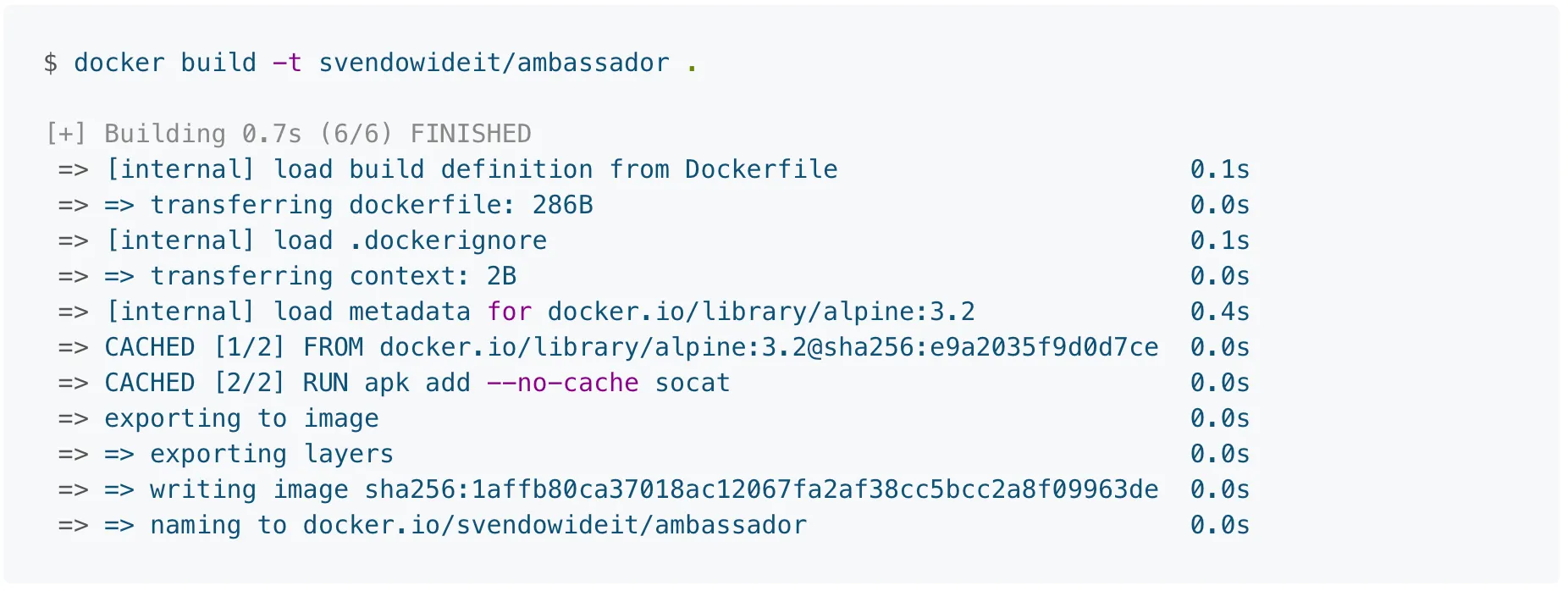Docker can build images automatically by reading the instructions from a Dockerfile. A Dockerfile is a text document that contains all the commands a user could call on the command line to assemble an image. Using docker build users can create an automated build that executes several command-line instructions in succession.
This page describes the commands you can use in a Dockerfile. When you are done reading this page, refer to the Dockerfile Best Practices for a tip-oriented guide.
Usage
The docker build command builds an image from a Dockerfile and a context. The build’s context is the set of files at a specified location PATH or URL. The PATH is a directory on your local filesystem. The URL is a Git repository location.
The build context is processed recursively. So, a PATH includes any subdirectories and the URL includes the repository and its submodules. This example shows a build command that uses the current directory (.) as build context:
The build is run by the Docker daemon, not by the CLI. The first thing a build process does is send the entire context (recursively) to the daemon. In most cases, it’s best to start with an empty directory as context and keep your Dockerfile in that directory. Add only the files needed for building the Dockerfile.
Warning
Do not use your root directory, /, as the PATH for your build context, as it cause the build to transfer the entire contents of your hard drive to the Docker daemon.
To use a file in the build context, the Dockerfile refers to the file specified in an instruction, for example, a COPYinstruction. To increase the build’s performance, exclude files and directories by adding a .dockerignore file to the context directory. For information about how to create a .dockerignore file see the documentation on this page.
Traditionally, the Dockerfile is called Dockerfile and located in the root of the context. You use the -f flag with docker build to point to a Dockerfile anywhere in your file system.
You can specify a repository and tag at which to save the new image if the build succeeds:
To tag the image into multiple repositories after the build, add multiple -t parameters when you run the build command:
Before the Docker daemon runs the instructions in the Dockerfile, it performs a preliminary validation of the Dockerfile and returns an error if the syntax is incorrect:
The Docker daemon runs the instructions in the Dockerfile one-by-one, committing the result of each instruction to a new image if necessary, before finally outputting the ID of your new image. The Docker daemon will automatically clean up the context you sent.
Note that each instruction is run independently, and causes a new image to be created - so RUN cd /tmp will not have any effect on the next instructions.
Whenever possible, Docker uses a build-cache to accelerate the docker build process significantly. This is indicated by the CACHED message in the console output. (For more information, see the Dockerfile best practices guide:
By default, the build cache is based on results from previous builds on the machine on which you are building. The --cache-from option also allows you to use a build-cache that’s distributed through an image registry refer to thespecifying external cache sources section in the docker build command reference.
When you’re done with your build, you’re ready to look into scanning your image with docker scan, and pushing your image to Docker Hub.
BuildKit
Starting with version 18.09, Docker supports a new backend for executing your builds that is provided by the moby/buildkit project. The BuildKit backend provides many benefits compared to the old implementation. For example, BuildKit can:
•
Detect and skip executing unused build stages
•
Parallelize building independent build stages.
•
Incrementally transfer only the changed files in your build context between builds
•
Detect and skip transferring unused files in your build context
•
Use external Dockerfile implementations with many new features
•
Avoid side-effects with rest of the API (intermediate images and containers)
•
Prioritize your build cache for automatic pruning
To use the BuildKit backend, you need to set an environment variable DOCKER_BUILDKIT=1 on the CLI before invoking docker build.
To learn about the experimental Dockerfile syntax available to BuildKit-based builds refer to the documentation in the BuildKit repository.
Format
Here is the format of the Dockerfile:
The instruction is not case-sensitive. However, convention is for them to be UPPERCASE to distinguish them from arguments more easily.
Docker runs instructions in a Dockerfile in order. A Dockerfile must begin with a FROM instruction. This may be after parser directives, comments, and globally scoped ARGs. The FROM instruction specifies the Parent Image from which you are building. FROM may only be preceded by one or more ARG instructions, which declare arguments that are used in FROM lines in the Dockerfile.
Docker treats lines that begin with # as a comment, unless the line is a valid parser directive. A # marker anywhere else in a line is treated as an argument. This allows statements like:








